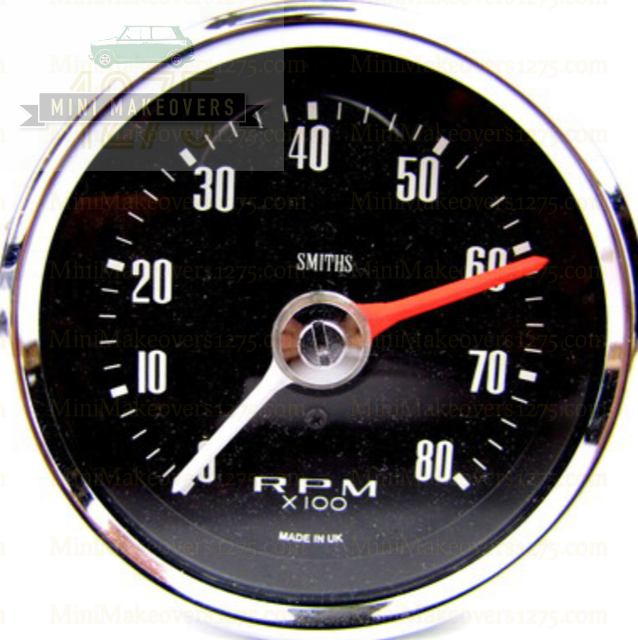Opening the Keys of Tachometers: Whatever You Need to Know Regarding This Important Instrument in Your Vehicle
Recognizing the details of tachometers can give useful understandings into your vehicle's efficiency and upkeep requirements. From measuring engine rate to decoding the information it presents, tachometers serve as a crucial device for car owners and fanatics alike. By unwinding the secrets behind this important tool, you can unlock a wealth of details that can enhance your driving experience and make certain the durability of your car.
Relevance of Tachometers
The relevance of tachometers lies in their capacity to supply essential real-time information concerning an engine's rotational rate, enabling specific tracking and maintenance of equipment. By measuring the transformations per minute (RPM) of an engine's crankshaft, tachometers use important understandings into the engine's efficiency - tachometer. This information is necessary for guaranteeing that the engine runs within its optimal array, avoiding possible damage from over-revving or underperforming
Tachometers play a crucial duty in assisting drivers and specialists identify any abnormalities in the engine's speed, which might show issues such as fuel inadequacy, mechanical problems, or extreme pressure on the engine. By quickly determining these concerns through tachometer analyses, upkeep can be executed proactively, avoiding expensive fixings and downtime in the future.
In addition, tachometers are specifically essential in high-performance automobiles and equipment, where precise control over engine speed is required for ideal procedure. Racing cars, airplane, and industrial tools count on tachometers to deliver peak performance while preserving security standards. In significance, tachometers are not simply instruments for measuring rate yet essential tools for making certain the smooth and efficient procedure of engines across different applications.
How Tachometers Procedure Engine Rate
Using sensors that spot the regularity of electric pulses generated by the engine's ignition system, tachometers properly determine the rotational speed of an engine. By checking the price at which these pulses are received, tachometers give real-time comments on how quickly the engine's crankshaft is turning per min, frequently referred to as changes per minute (RPM)
The tachometer's sensing unit, usually linked to the engine's ignition coil or ignition system cables, grabs the electric signals produced each time a cyndrical tube fires. These signals are then exchanged RPM analyses displayed on the scale or instrument cluster within the driver's next page sight. Tachometers can be analog or electronic, with modern automobiles typically including digital screens for specific and immediate RPM analyses.
This information is critical for chauffeurs to go now comprehend the engine's efficiency, avoid over-revving, maximize gear moving, and make certain efficient gas intake. By accurately determining engine rate, tachometers play a vital function in aiding drivers run their lorries safely and effectively.
Analyzing Tachometer Analyses
Having a clear understanding of exactly how tachometers determine engine speed establishes the foundation for efficiently interpreting the RPM analyses showed. Interpreting tachometer analyses is important for optimal lorry efficiency and engine health. When the engine is idling, the tachometer needle typically relaxes around 600-1000 RPM, depending on the car.


Tips for Utilizing Tachometers Effectively
To improve driving efficiency and enhance engine performance, what trick techniques can be applied for successfully utilizing tachometers? Tachometers Bonuses are vital tools that supply real-time feedback on engine speed, making it possible for chauffeurs to make enlightened decisions for far better performance - tachometer. Here are some pointers for using tachometers successfully:
Comprehending Ideal RPM Array: Acquaint yourself with the optimum RPM (Revolutions Per Minute) variety for your lorry. Maintaining the engine within this range can improve fuel effectiveness and lengthen the engine's life-span.
Moving Gears at the Right Time: Utilize the tachometer to figure out the finest time to move gears. Objective to move gears when the RPM reaches the optimal range for the following equipment.
Monitoring Engine Stress: High RPMs for prolonged periods can strain the engine. Watch on the tachometer to prevent over-revving, specifically throughout velocity or when bring heavy loads.
Tachometers and Lorry Upkeep
When thinking about lorry upkeep, tachometers play an essential duty in keeping track of engine efficiency and finding potential concerns. Tachometers provide essential information on engine speed, enabling vehicle drivers and auto mechanics to make certain that the engine is operating within the advised RPM range.
Along with spotting prospective issues, tachometers can likewise assist in optimizing fuel effectiveness. By maintaining the engine speed within the ideal array, drivers can enhance their gas mileage and lower fuel consumption. This not just profits the driver's budget yet also contributes to ecological preservation by lowering unsafe emissions.
Final Thought
